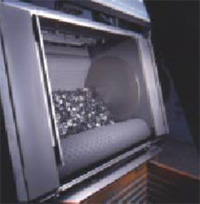In recent years, the complexity of engineering decisions surrounding threaded fasteners has heightened. The defining criteria for finishes have shifted to include not only functionality and corrosion protection but also environmental compliance.
The beginning of the engineering decision is the cleaning methods employed to ensure that manufacturing oils, miscellaneous soil and heat treat scale are removed from the substrate. This is a vital component to good adhesion to the substrate and ensuring quality performance of the finish.
Common methods are: acid pickling, vapor degreasing, mechanical blasting and alkaline washes. Just as finishes are required to be environmentally friendly, these cleaning methods are also subject to regulations.
Acid pickling uses an acid dip that attacks the surface of the part and removes heat treat scale but does not emulsify the oils and completely remove them. Pickling, while producing a good surface for the finish to be applied to and promoting adhesion, also generates wastewater emissions and has the potential of causing Hydrogen Embrittlement.
Vapor degreasing uses mostly chlorinated solvents to remove oil and other contaminants from the part. This process does not remove heat treat scale so it must be used in conjunction with another method to provide a clean substrate. Due to the highly regulated solvents used in this process, the number of companies willing to use it has radically decreased.
Cleaning for DACROMET® (Environmentally Friendly)

Typical tumble blaster used to clean scale from heat-treated parts.
Use of an alkaline wash solution removes manufacturing oils and other soils from the surface of parts. These alkaline cleaners are typically environmentally friendly, but they do not remove heat treat scale and a mechanical blast is required if the part has been heat-treated.
Mechanical blasting consists of steel shot, grit or glass beads blasting the surface and as a result removing heat treat scale and rust. This is a good cleaning method used to ensure that there are no remaining contaminants on the surface. This method does not remove oils from the surface and is to be used after alkaline cleaning. The most popular cleaning method that provides the necessary cleanliness while complying with environmental regulations is the use of an Alkaline Wash followed by a Mechanical Blast. A result of this is many finishers have chosen to employ both means in their facility to ensure a quality finish is preceded by a quality cleaning method.
